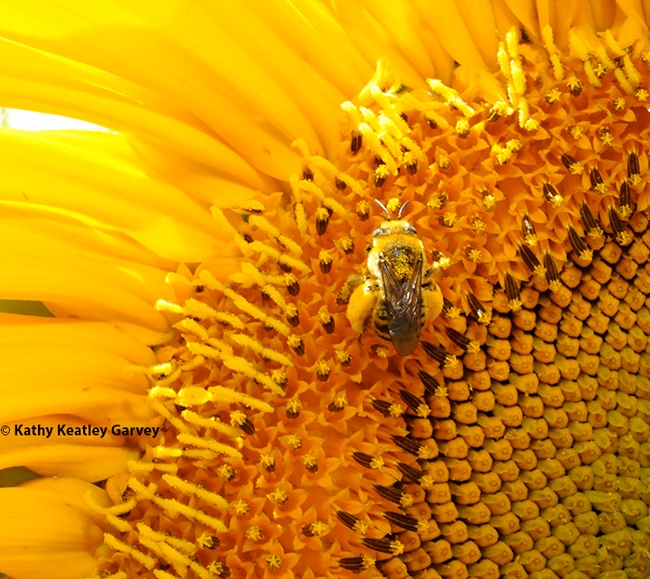Posts Tagged: environment
Spectacular Leaf Insect Latest Addition to Origami Display at Bohart Museum
A spectacular leaf insect is the latest addition to the Bohart Museum of Entomology's hallway display of origami, all crafted by UC Davis...

UC Davis alumnus Kevin Murakoshi gifts a leaf insect origami that he crafted to the Bohart Museum of Entomology. Accepting it is UC Davis distinguished professor emerita Lynn Kimsey, former Bohart Museum director and now executive director of the Bohart Museum Society. (Photo by Kathy Keatley Garvey)

Kevin Murakoshi created these two praying mantises in origami. (Photo by Kathy Keatley Garvey)

Origamis of two ticks (one engorged) and a bed bug by Kevin Murakoshi. (Photo by Kathy Keatley Garvey)
The Migratory Painted Lady and a UC Davis Chancellor's Postdoctoral Fellow
When folks think of "migratory butterflies," they usually associate that term with monarchs. But painted ladies, Vanessa cardui, are also...

The painted lady, Vanessa cardui, is a migratory butterfly. This image, taken in Vacaville, shows the butterfly nectaring on Lantana. (Photo by Kathy Keatley Garvey)

A side view of a painted lady, Vanessa cardui, nectaring on a Mexican sunflower, Tithonia rotundifola. (Photo by Kathy Keatley Garvey)
Outstanding PBS Deep Look Video: 'Why Do Sunflowers Face the Sunrise?'
Sunflowers bring out the best in us. They bring us joy, happiness, hope and unity. But wait until you watch the newly released PBS Deep...

The newly released PBS Deep Look video "Why Do Sunflowers Face the Sunrise?" is a crowd favorite. (Screen shot)

A bee commonly found on sunflowers is Epimelissodes obliqua expurgata, formerly known as Svastra obliqua expurgata. (Photo by Kathy Keatley Garvey)
International Insect Salon's Amazing Images
If you love capturing images of insects or admiring the images of other photographers, you'll want to access the 66th annual International...

Kwong Ying Au-yeung of Hong Kong won best of show in the International Insect Salon with this image of a robber fly and prey. (Screen shot from International Insect Salon)

This image by Joseph Spencer of Thomasboro, Ill., won the medal for best image by an ESA member in the International Insect Salon. He titled it "Cloudless Sulphur on Thistle." (Screen shot from the International Insect Salon)

Dan Osipov of Danville, Calif., won a honorable mention in the International Insect Salon competition with this image that he titled "Glasswings." Only two California photographers had images accepted. (Screen shot from International Insect Salon)
What's a Group of Butterflies Called?
What's a group of butterflies called? A kaleidoscope, swarm, or rabble. If you've ever had a kaleidoscope in your childhood and admired the...

Migratory monarchs in a Vacaville pollinator garden filled with Mexican sunflowers (Tithonia rotundifola). (Photo by Kathy Keatley Garvey)

Migratory monarchs in flight over a patch of Mexican sunflowers (Tithonia rotundifola) in a Vacaville garden. (Photo by Kathy Keatley Garvey)

